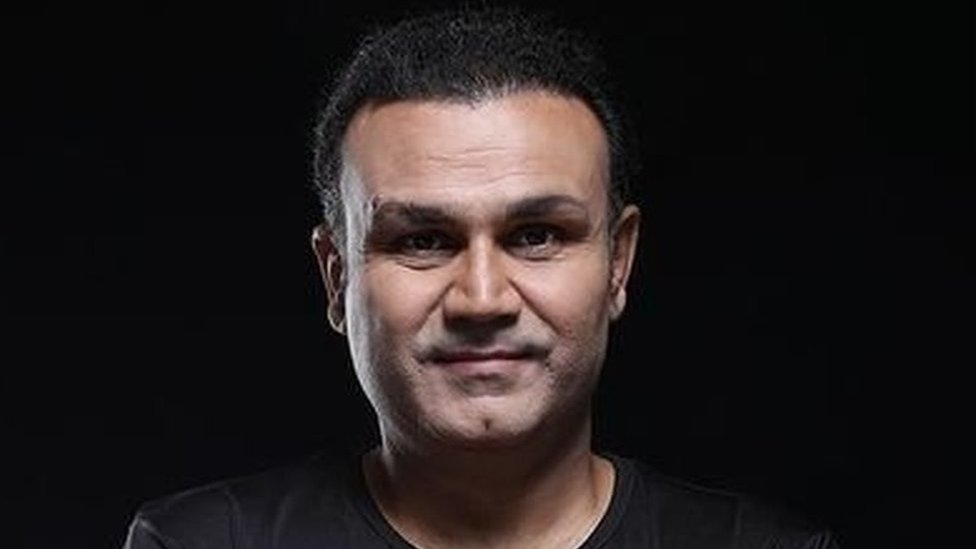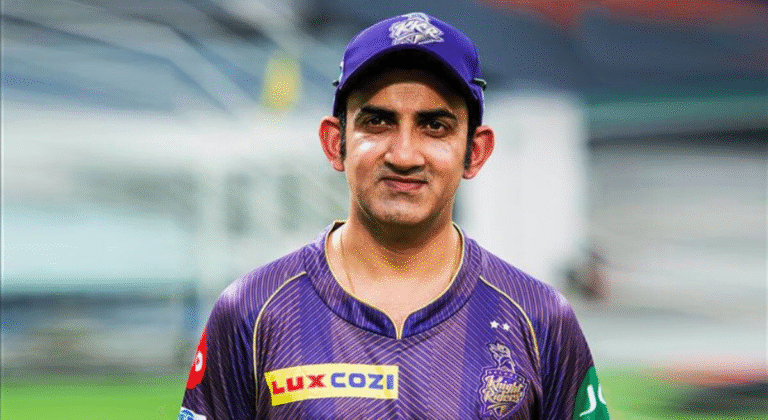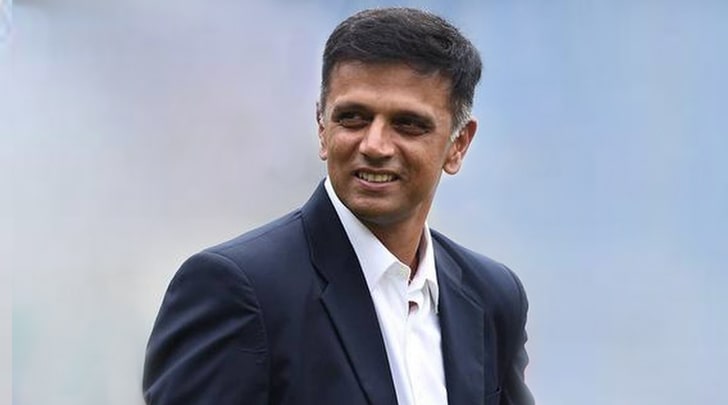Full Name: Virender Sehwag
Nickname: Viru, Nawab of Najafgarh, Sultan of Multan
Date of Birth: October 20, 1978
Age (as of 2025): 47 years
Place of Birth: Najafgarh, Delhi, India
Nationality: Indian
Religion: Hinduism
Profession: Former Cricketer, Commentator, and Cricket Analyst
Batting Style: Right-Handed Batsman
Bowling Style: Right-Arm Off Break
Role in Team: Opening Batsman
Domestic Teams: Delhi, Delhi Daredevils (IPL), Kings XI Punjab (now Punjab Kings), Haryana (early career)
Net Worth (as of 2025): Approx. ₹300 Crore – ₹350 Crore INR (around $36–42 million USD)
Early Life and Family Background
Virender Sehwag was born on October 20, 1978, in Najafgarh, Delhi, India. He grew up in a middle-class Jat family, where cricket was seen more as a hobby than a career. His father, Krishan Sehwag, was a grain merchant, and his mother, Krishna Sehwag, was a homemaker. Sehwag was the third of four children, with two sisters and one brother. His family initially discouraged him from pursuing cricket seriously, focusing instead on academics, but Sehwag’s passion for the sport was unshakable.
He would spend hours playing cricket in the streets of Najafgarh, often breaking windows—something that earned him both scoldings and admiration. From a very young age, his fearless batting and natural timing stood out. Sehwag’s father finally supported his dream when he realized his son’s extraordinary talent and dedication to the game.
Education and Early Cricket Training
Sehwag attended Arora Vidya School, Delhi, where his love for cricket flourished. He later graduated from Jamia Millia Islamia University with a degree in commerce. His formal cricket training began at the Sonnet Cricket Club, Delhi, under the mentorship of Coach A.N. Sharma, who played a crucial role in refining Sehwag’s technique. Even as a young cricketer, Sehwag was known for his fearless stroke play. He idolized Sachin Tendulkar, and his batting style was often compared to the master blaster’s because of their similar aggressive approach.
Despite lacking the classical textbook technique, Sehwag relied on exceptional hand-eye coordination, confidence, and timing. He quickly rose through Delhi’s junior cricket circuit and began dominating bowlers with his natural attacking flair.
Domestic Career
Virender Sehwag made his first-class debut for Delhi in the 1997–98 Ranji Trophy season. He soon became one of the most destructive batsmen in the domestic circuit, scoring runs at a blistering pace. His performances earned him a place in the North Zone team for the Duleep Trophy, where he impressed selectors with consistent match-winning knocks.
Sehwag’s domestic success was defined by his ability to take on fast bowlers fearlessly—a rare trait in Indian batsmen at the time. His quick scoring rate and ability to change the game’s tempo made him a standout performer, setting the stage for his entry into international cricket.
International Debut and Early Struggles
Virender Sehwag made his One Day International (ODI) debut for India against Pakistan in April 1999 at Mohali. However, his early international journey was not smooth. He struggled to maintain consistency and was often dropped from the team. But Sehwag’s breakthrough came in March 2001, when he scored a blistering 58 off just 54 balls against Australia at Bangalore, followed by a stunning century (100 off 75 balls) against New Zealand at Colombo.
That innings marked the beginning of Sehwag’s transformation from a domestic talent to an international star. His ability to dominate world-class bowlers with ease made him one of India’s most dangerous openers. He made his Test debut against South Africa in 2001, scoring a brilliant 105 runs at Bloemfontein—announcing his arrival in grand style.
The Rise of a New Kind of Opener
Traditionally, Indian cricket was known for cautious and technically sound openers, but Sehwag completely redefined the role. He brought an explosive and fearless approach to Test and ODI cricket. Partnering with Sachin Tendulkar, Sourav Ganguly, and later Gautam Gambhir, Sehwag became the backbone of India’s top order. His philosophy was simple—”If the ball is there to hit, I’ll hit it.”
His batting was built on timing, instinct, and confidence rather than footwork or technique. Whether facing pace or spin, Sehwag never altered his attacking mindset. His aggressive starts often gave India a massive advantage in both Tests and ODIs.
Major Achievements and Record-Breaking Performances
Sehwag’s career is filled with jaw-dropping records that showcase his dominance and audacity at the crease. In March 2004, he became the first Indian batsman to score a triple century in Test cricket, smashing 309 runs against Pakistan in Multan—earning him the legendary nickname “The Sultan of Multan.”
He followed this up with another triple century—319 runs against South Africa in Chennai (2008)—and came close to a third one, scoring 293 against Sri Lanka (2009). These feats made him only the fourth player in history to score two triple centuries in Tests.
In ODIs, Sehwag’s most iconic moment came on December 8, 2011, when he scored a record-breaking 219 runs against the West Indies in Indore, becoming only the second batsman in the world (after Tendulkar) to score a double century in ODIs. His explosive innings featured 25 fours and 7 sixes.
He also played a key role in India’s 2007 ICC T20 World Cup and 2011 ICC Cricket World Cup victories. His quick starts at the top often set the tone for India’s success.
Playing Style and Batting Philosophy
Virender Sehwag’s batting style was unique—he relied heavily on instinct, eye coordination, and fearless aggression. Unlike most batsmen, who adjusted their approach based on match conditions, Sehwag played the same way regardless of format or situation. His approach was brutally simple: see the ball, hit the ball.
He had no fear of getting out and often attacked even the best bowlers from the first delivery. Sehwag’s strike rate in Tests (over 82) remains one of the highest ever for a top-order batsman, proving how revolutionary his approach was. Despite his aggressive nature, he had an exceptional record in Test cricket, especially overseas.
Captaincy and Leadership
Although Sehwag was never a full-time captain for long, he did lead India in a few matches with success. As vice-captain under MS Dhoni, he played a major leadership role in motivating young players. His calm confidence and sense of humor made him a natural team player. In domestic cricket, he also captained the Delhi Daredevils in the Indian Premier League (IPL), where he became one of the first Indian batsmen to score a century in the tournament.
Career Statistics
- Test Matches: 104
- Test Runs: 8,586
- Test Centuries: 23
- ODIs: 251
- ODI Runs: 8,273
- ODI Centuries: 15
- T20Is: 19 matches, 394 runs
- Highest Test Score: 319
- Highest ODI Score: 219
His career strike rate—82 in Tests and 104 in ODIs—makes him one of the most destructive openers in cricket history. Few players could dominate bowlers across all formats like Sehwag did.
Awards and Honors
Virender Sehwag’s contributions to Indian cricket have been recognized through numerous awards:
- Arjuna Award (2002)
- Padma Shri (2010)
- ICC Test Player of the Year (2010)
- Wisden Leading Cricketer in the World (2008 & 2009)
- ICC Team of the Decade (2000–2009)
He has also received multiple honors from the BCCI and the Delhi Government for his achievements in sports.
Personal Life
Virender Sehwag married Aarti Ahlawat in 2004 in a traditional ceremony attended by then Prime Minister Atal Bihari Vajpayee. The couple has two sons, Aryavir and Vedant Sehwag. Off the field, Sehwag is known for his cheerful nature, simplicity, and witty sense of humor. His spontaneous and hilarious commentary style after retirement has made him a social media favorite. He is also involved in several charitable activities and runs the Sehwag International School in Jhajjar, Haryana, which aims to promote education and sports together.
Retirement and Post-Cricket Career
Virender Sehwag announced his retirement from all forms of international cricket in October 2015, marking the end of an era. After retiring, he took up roles as a cricket commentator, mentor, and motivational speaker. He also served as a mentor for the Kings XI Punjab (now Punjab Kings) in the IPL and continues to contribute to Indian cricket through his insights and humor in commentary.
Sehwag’s social media presence, especially on Twitter, is immensely popular for his witty one-liners and humorous takes on cricket and life.
Legacy
Virender Sehwag will always be remembered as the most fearless opener in Indian cricket history. He changed the way Test cricket was played by bringing aggression and entertainment to the traditional format. His ability to score triple centuries in Tests and double centuries in ODIs remains unmatched among Indian batsmen.
More than his records, Sehwag’s greatest contribution was his mindset—he taught future generations of cricketers to play with freedom, self-belief, and joy. His legacy lives on in the attacking spirit of players like Rohit Sharma and Rishabh Pant, who embody the same fearless attitude that Sehwag brought to Indian cricket.
He will forever be known as the “Sultan of Multan,” the man who smiled in the face of fear and changed the art of batting forever.








